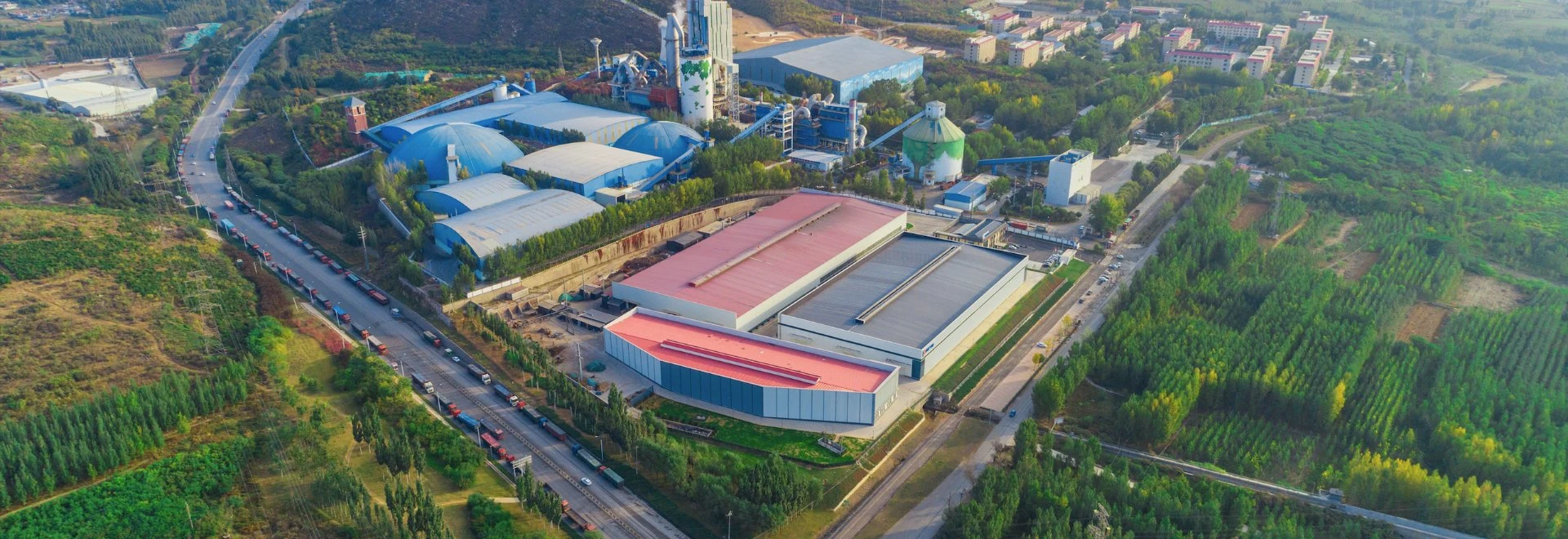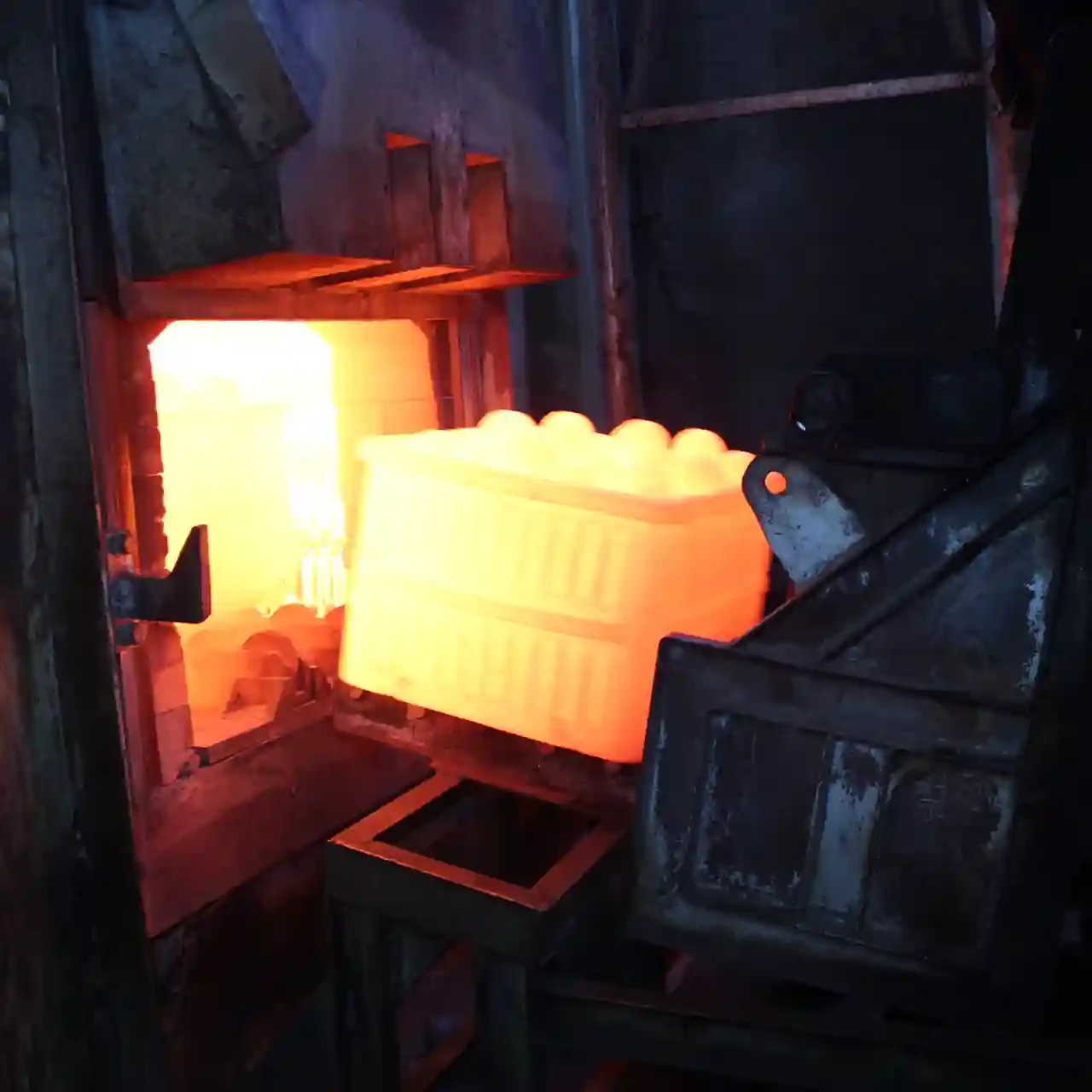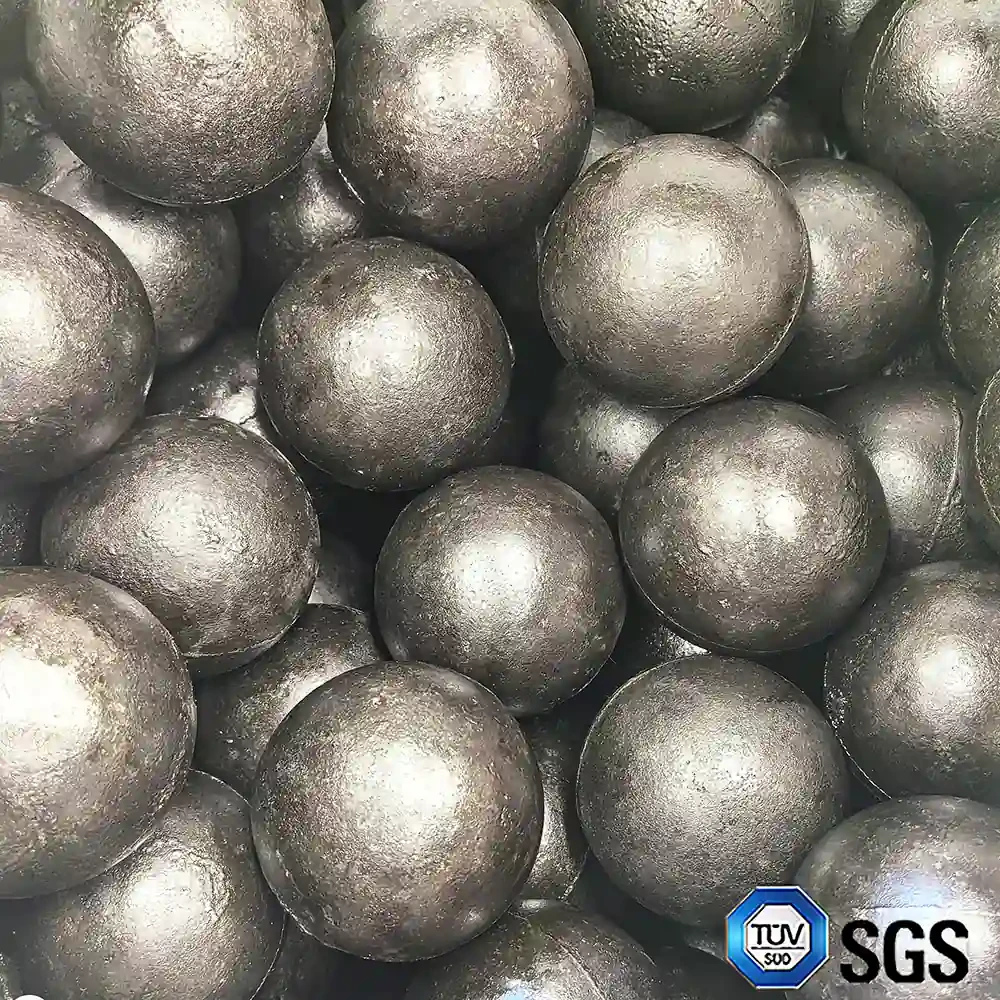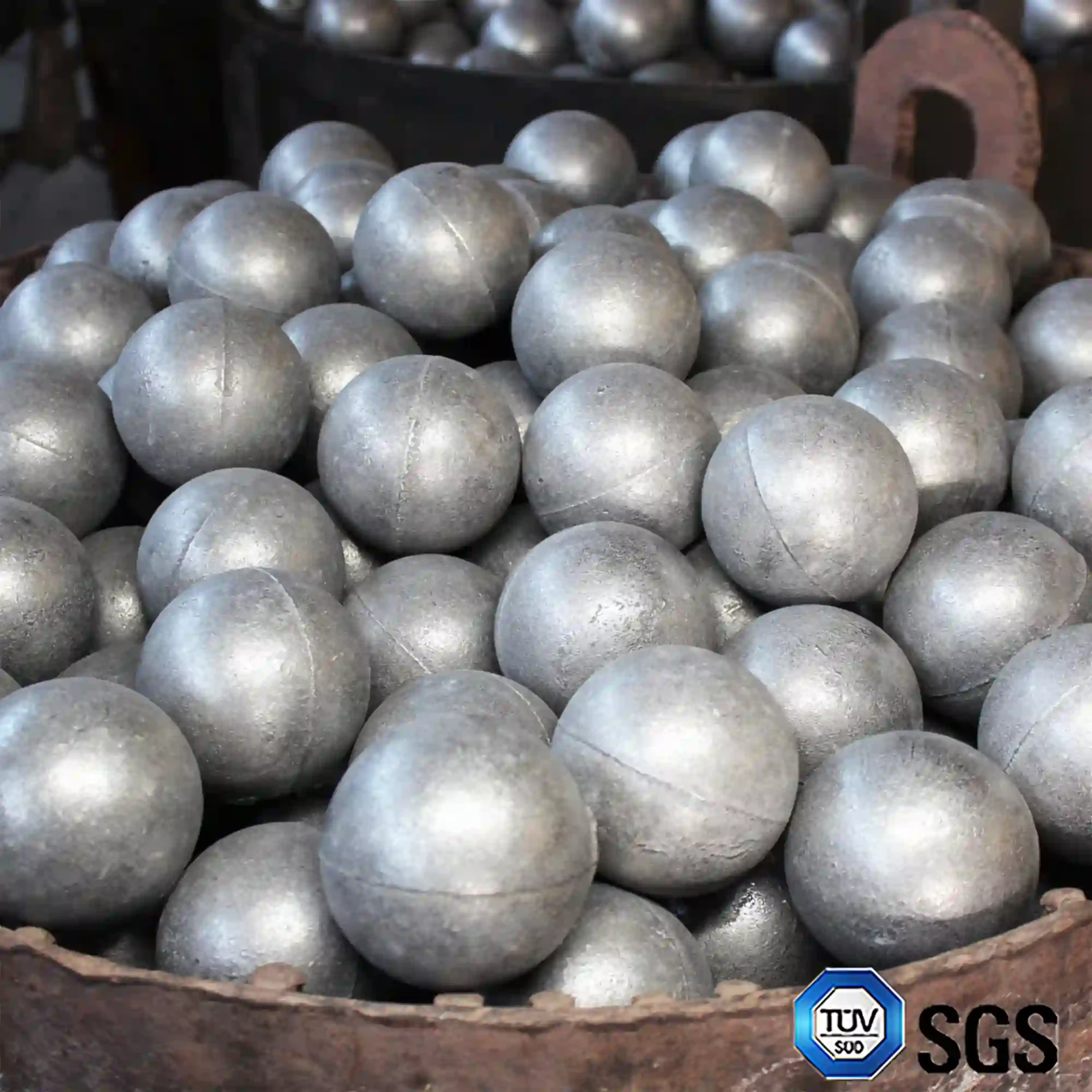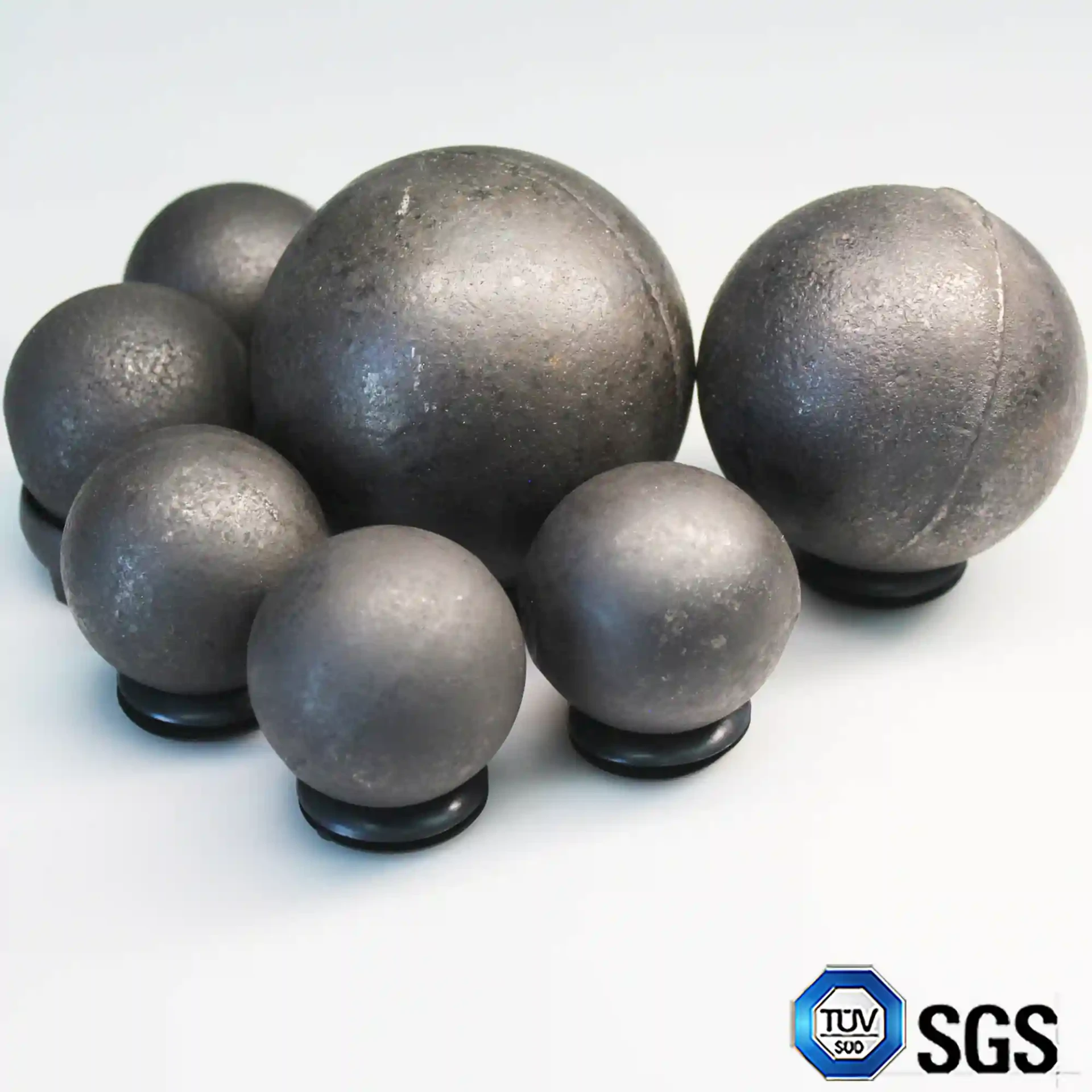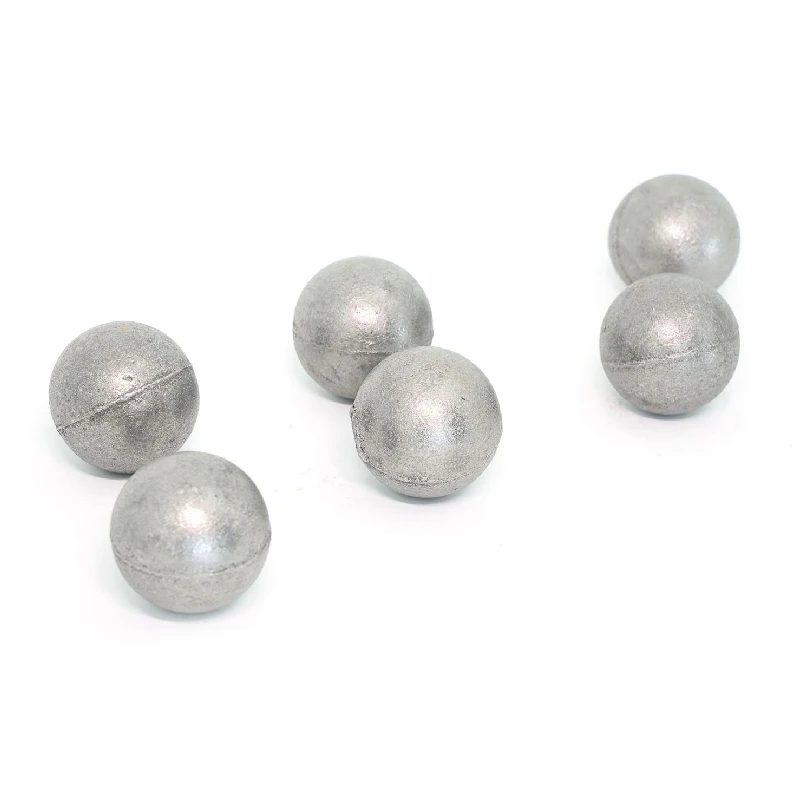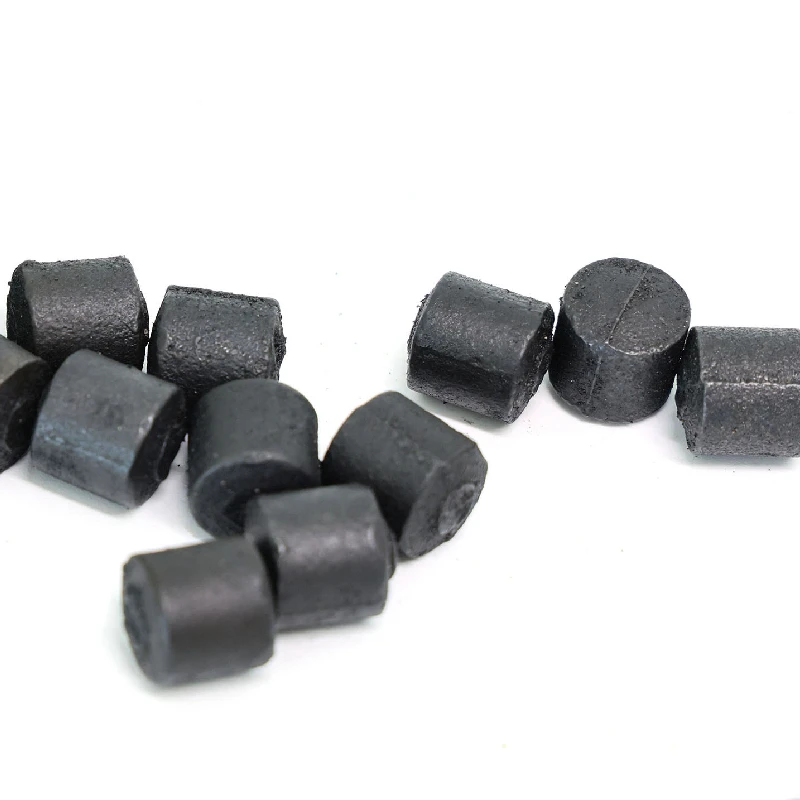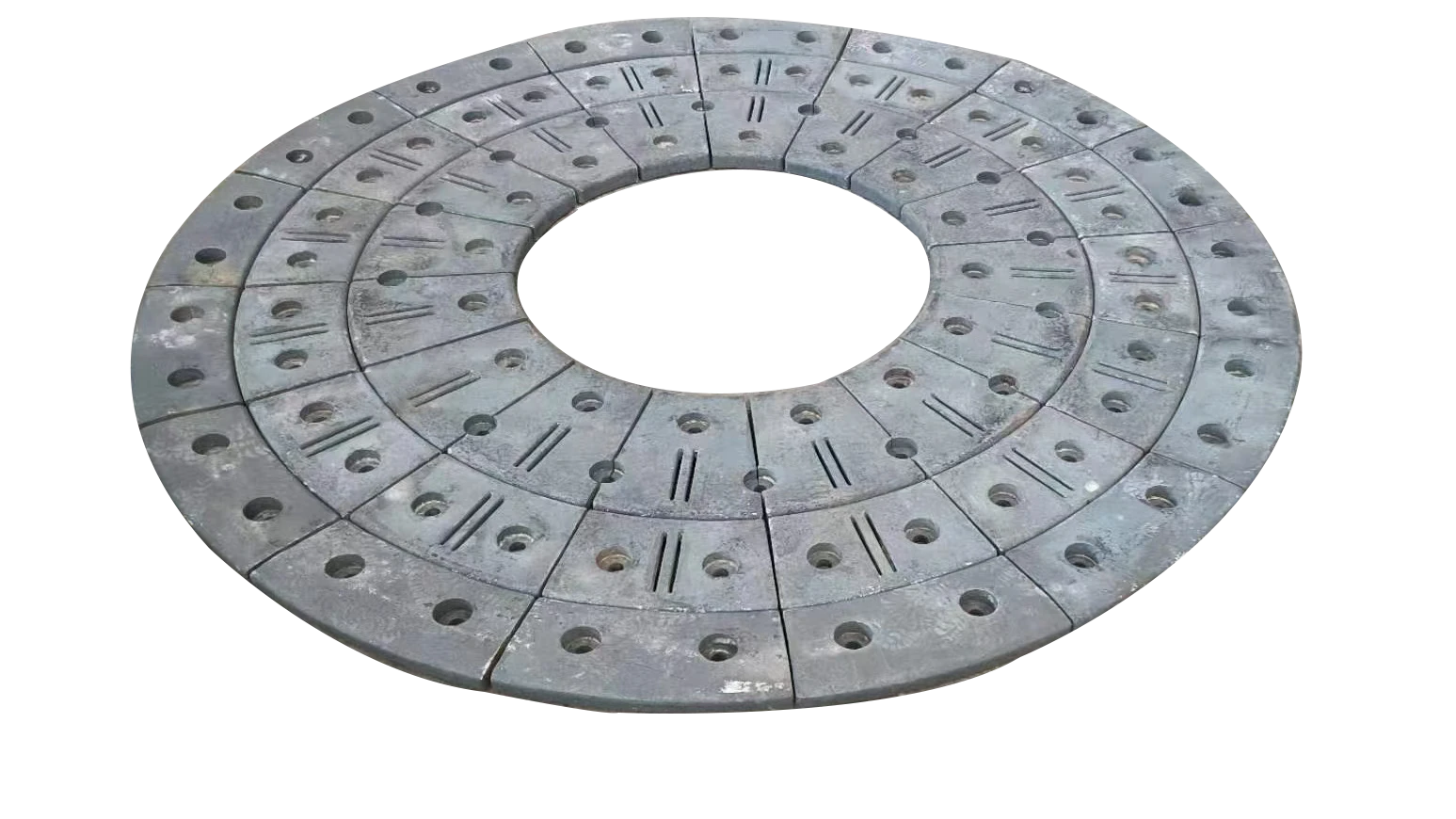Aug . 10, 2025 05:20 Back to list
Top Grinding Cylpebs Factory & Media Supplier: Quality Cylpebs
In the demanding landscape of industrial grinding, the efficacy and longevity of grinding media are paramount, directly influencing operational efficiency, energy consumption, and overall production costs. Industries ranging from cement and mining to power generation and chemical processing rely heavily on robust and high-performing grinding solutions. At the core of these operations lies the sophisticated technology and rigorous manufacturing processes employed by a leading grinding cylpebs factory. These specialized facilities are dedicated to producing grinding media engineered to withstand extreme abrasive and impact forces, ensuring optimal material comminution. The quest for superior grinding performance has led to significant advancements in material science and manufacturing techniques, yielding products like Low Chrome Grinding Forgings, which offer a compelling balance of hardness, toughness, and cost-effectiveness. The selection of the right grinding media, supplied by reputable grinding media suppliers, is not merely a purchasing decision but a strategic investment that dictates the productivity and profitability of a comminution circuit. Understanding the intricate details of their production, application, and advantages is crucial for B2B decision-makers and technical personnel aiming to optimize their grinding operations. This comprehensive exploration delves into the advanced methodologies, technical specifications, and tangible benefits associated with high-quality grinding cylpebs, offering a deep dive into the processes that set industry leaders apart and provide a competitive edge in various industrial sectors.
The modern industrial environment places immense pressure on manufacturers to deliver products that are not only efficient but also sustainable and economically viable. For grinding media suppliers, this translates into a continuous pursuit of innovation in material composition, heat treatment protocols, and quality assurance. The global market for grinding media is characterized by its dynamic nature, influenced by fluctuating raw material prices, evolving environmental regulations, and the perpetual demand for higher productivity. A proficient grinding cylpebs factory navigates these complexities by adhering to stringent quality control, investing in cutting-edge technology, and fostering a deep understanding of end-user applications. The Low Chrome Grinding Forging, as a prime example, represents a significant advancement over traditional grinding balls, particularly in its unique cylindrical-elliptical shape, which enhances grinding efficiency through improved contact area and reduced slippage within the mill. This shape, combined with the material's specific metallurgical properties, contributes to a more consistent wear pattern, thereby extending service life and reducing downtime for media replenishment. Furthermore, the strategic partnerships between a specialized grinding cylpebs factory and its clients extend beyond mere transactions, often involving detailed technical consultations, performance analysis, and customized solutions tailored to specific mill types and operational parameters. This collaborative approach ensures that the grinding media supplied aligns perfectly with the client's operational goals, optimizing energy consumption, enhancing grinding fineness, and ultimately bolstering the bottom line. The emphasis on detailed technical data, rigorous testing, and transparent communication is what distinguishes top-tier grinding media suppliers in a highly competitive market, building lasting relationships founded on trust and proven performance.
Advanced Manufacturing Process of Grinding Cylpebs
The production of high-performance grinding cylpebs, such as the Low Chrome Grinding Forging, is a testament to sophisticated metallurgical engineering and precision manufacturing. A world-class grinding cylpebs factory employs a multi-stage process that begins with meticulous raw material selection and culminates in rigorous quality control, ensuring each product meets stringent industry standards like ISO and ANSI. The journey commences with the careful sourcing of high-grade steel alloys, predominantly low-chrome varieties, chosen for their balanced attributes of hardness, toughness, and wear resistance. Unlike high-chrome alloys that are typically cast, low-chrome grinding media often benefits from forging, a process that mechanically works the metal to refine its grain structure, eliminate internal defects, and enhance its mechanical properties. This forging process involves heating steel billets to precise temperatures, followed by shaping them under immense pressure using hammers or presses. The mechanical deformation during forging significantly improves the material's density, impact strength, and wear resistance compared to cast alternatives, making it particularly suitable for applications demanding high impact and abrasion resistance. Following forging, the cylpebs undergo an elaborate heat treatment regimen, which is critical to achieving the desired metallurgical properties. This includes quenching, where the heated cylpebs are rapidly cooled in controlled mediums like water or oil to achieve a hard martensitic structure, followed by tempering, which involves reheating the cylpebs to a specific temperature to relieve internal stresses and improve toughness without significantly sacrificing hardness. This carefully calibrated heat treatment protocol is the key differentiator for top-tier grinding media suppliers, as it directly impacts the product's ultimate performance, including its service life and energy efficiency in the mill.
Simulated Grinding Cylpebs Manufacturing Process Flow Diagram Description:
1. Raw Material Receiving & Inspection: High-quality steel billets (e.g., specific grades of carbon steel with controlled chromium content for low-chrome variants) are received. Each batch undergoes chemical analysis (spectroscopy), physical inspection for defects, and dimension verification against specifications to ensure purity and consistency. Typical standards include ASTM A29/A29M for steel bars.
2. Heating & Pre-Treatment: Billets are loaded into induction or gas furnaces and uniformly heated to a specific forging temperature (e.g., 950-1200°C) to achieve optimal plasticity for shaping. This controlled heating prevents thermal shock and ensures uniform temperature distribution throughout the material.
3. Forging (Hot Forming): The heated billets are transferred to specialized forging machines (e.g., upsetters, hot presses, or hammers) where they are precisely shaped into the cylindrical-elliptical form of the cylpebs. This process compacts the material, refines its grain structure, and eliminates porosity, significantly enhancing its strength and toughness. Precision dies ensure consistent dimensions and shape.
4. Automated Quenching: Immediately after forging, the hot cylpebs are transferred to an automated quenching system. They are rapidly cooled in a controlled medium (e.g., water, oil, or polymer solutions) to achieve a desired hardness (e.g., 60-65 HRC). The quenching process is critical for forming a fine martensitic microstructure, which provides the excellent wear resistance.
5. Tempering: Following quenching, the cylpebs are subjected to tempering. This involves reheating them to a lower, precise temperature (e.g., 200-400°C) for a specific duration. Tempering reduces the brittleness of the quenched material, relieves internal stresses, and enhances toughness and impact resistance, while still retaining high hardness.
6. Post-Treatment & Finishing: After tempering, cylpebs might undergo further processing such as shot blasting to remove scale and improve surface finish. For applications requiring extreme precision, CNC machining might be employed, though less common for standard grinding media.
7. Final Quality Inspection & Testing: Each batch undergoes comprehensive quality control, including hardness testing (Rockwell C scale), impact toughness testing (Charpy V-notch), metallographic analysis for microstructure, dimensional checks, and visual inspection for surface defects. Adherence to international standards like ISO 9001, ASTM E18 (for hardness), and ASTM E23 (for impact) is rigorously maintained.
8. Packaging & Shipping: Qualified cylpebs are packaged securely (e.g., in steel drums, bulk bags) to prevent damage during transit and are prepared for global distribution to various industries.
Beyond the core manufacturing steps, a leading grinding cylpebs factory places immense emphasis on quality assurance, integrating ISO 9001 certified management systems to ensure traceability and consistency from raw material to finished product. Each production batch undergoes rigorous testing, including hardness measurements (Rockwell C), impact toughness tests (Charpy V-notch), and comprehensive metallographic analysis to verify microstructure and material integrity. Dimensional accuracy is also precisely controlled, as consistent sizing is critical for optimal mill performance and preventing media breakage or uneven wear. The typical service life of such forged cylpebs, especially the Low Chrome Grinding Forging, can exceed conventional cast media by 20-30%, translating into significant cost savings through reduced media consumption and fewer shutdowns for replenishment. Their application spans a diverse range of industries. In petrochemical plants, they are vital for grinding catalysts and other fine powders. In metallurgy, they are indispensable for ore comminution and slag grinding. For water supply and drainage systems, they might be used in processing certain raw materials or industrial waste. The inherent advantages of these forged cylpebs, notably their superior wear resistance and impact toughness, contribute to substantial energy savings due to more efficient grinding and a lower specific energy consumption per ton of material processed. Furthermore, the material's carefully controlled composition and homogeneous microstructure provide excellent corrosion resistance, a critical factor in wet grinding environments where chemical reactions can accelerate wear. By minimizing media consumption and optimizing grinding efficiency, these advanced grinding media contribute significantly to both operational profitability and environmental sustainability, reinforcing the pivotal role of a specialized grinding cylpebs factory in global industrial infrastructure.
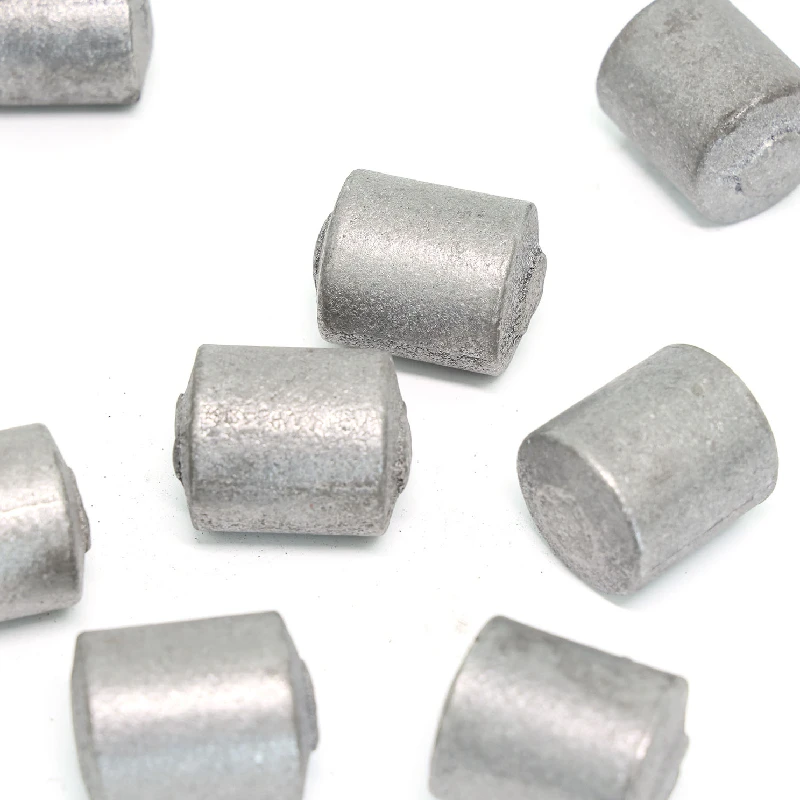
Technical Parameters & Performance Benchmarking
Understanding the technical parameters of grinding media is fundamental for engineering and procurement teams tasked with optimizing comminution circuits. A reputable grinding cylpebs factory provides comprehensive data sheets detailing the precise chemical composition, physical properties, and performance metrics of their products. For Low Chrome Grinding Forging, the chemical composition typically includes controlled percentages of Carbon (C), Silicon (Si), Manganese (Mn), Chromium (Cr), and trace elements, each playing a crucial role in determining the final material properties. For instance, the chromium content (typically 0.5% to 2.0%) provides adequate hardenability and wear resistance without the cost and brittleness issues associated with high-chrome alloys. The carefully balanced carbon content ensures sufficient hardness, while manganese contributes to strength and hardenability, and silicon acts as a deoxidizer and strengthens the ferrite matrix. Beyond chemical makeup, the mechanical properties are critical indicators of performance. Hardness, measured in Rockwell C (HRC), signifies resistance to indentation and abrasion, with typical ranges for forged low-chrome cylpebs falling between 58-65 HRC, ensuring superior wear resistance. Impact toughness, often quantified by Charpy V-notch values, measures the material's ability to absorb energy before fracturing, a vital attribute for resisting breakage under the repeated impacts within a grinding mill. Forged cylpebs generally exhibit significantly higher impact toughness (e.g., >5 J/cm² compared to
Typical Technical Specifications for Low Chrome Grinding Forging Cylpebs
| Parameter | Unit | Typical Value (Low Chrome Forged) | Significance in Grinding |
|---|---|---|---|
| Hardness | HRC | 58 - 65 | Directly correlates to wear resistance against abrasive materials. |
| Impact Toughness | J/cm² | ≥ 5 | Resistance to fracturing under repeated impact; prevents media breakage. |
| Density (Specific Gravity) | g/cm³ | 7.8 - 7.85 | Influences mill charge density and energy transfer efficiency. |
| Chromium (Cr) Content | % | 0.5 - 2.0 | Contributes to hardenability and moderate wear resistance. |
| Carbon (C) Content | % | 0.6 - 0.9 | Primary element for hardness, forming carbides. |
| Manganese (Mn) Content | % | 0.5 - 1.2 | Enhances hardenability and strength. |
| Silicon (Si) Content | % | 0.15 - 0.35 | Deoxidizer and strengthening agent. |
| Standard Size Range | mm (Length x Diameter) | 16x16 to 80x80 | Applicable for various mill types and grinding fineness requirements. |
| Microstructure | N/A | Tempered Martensite with Fine Carbides | Optimal for high wear resistance and toughness balance. |
Furthermore, understanding the comparative advantages against other grinding media types is vital for informed decision-making. While high-chrome cast balls (20% to 28% Cr) offer superior hardness and wear resistance in highly abrasive environments, their lower impact toughness makes them susceptible to breakage in mills with high impact energy, leading to higher media consumption and potential liner damage. Conversely, conventional forged steel balls might offer good toughness but might lack the sustained wear resistance of low-chrome options, leading to faster attrition rates. The unique shape of cylpebs, whether forged or cast, provides a larger contact area than spheres, which can enhance grinding efficiency by improving the probability of breakage and reducing the cushioning effect in the mill. This translates to lower specific energy consumption (kWh/ton) and often a finer product grind. Leading grinding media suppliers often provide wear rate data, typically expressed in grams per ton of material processed, which serves as a crucial benchmark for evaluating media performance in specific applications. These empirical data points, gathered from extensive field trials and laboratory simulations, provide real-world insights into the expected longevity and cost-effectiveness of the grinding media. For industrial operations, the total cost of ownership (TCO), which includes initial purchase price, media consumption rates, energy consumption, and mill downtime, is the ultimate metric. A high-quality product from a reputable grinding cylpebs factory, despite a potentially higher upfront cost per ton, often results in a significantly lower TCO due to extended service life and improved grinding efficiency. This holistic view of performance underscores the importance of thorough technical evaluation beyond just initial pricing, aligning with the strategic objectives of modern industrial operations focused on sustainable efficiency.
Grinding Media Comparison: Low Chrome Forged Cylpebs vs. Alternatives
| Feature/Type | Low Chrome Forged Cylpebs | High Chrome Cast Balls (e.g., 20-28% Cr) | Carbon Steel Forged Balls |
|---|---|---|---|
| Shape | Cylindrical-elliptical | Spherical | Spherical |
| Manufacturing Process | Forging & Heat Treatment | Casting & Heat Treatment | Forging & Heat Treatment |
| Hardness (HRC) | 58-65 (Consistent) | 60-68 (Surface harder) | 55-62 (Good) |
| Impact Toughness (J/cm²) | Excellent (≥5) | Good to Moderate ( | Excellent (≥8) |
| Wear Resistance | Very High (due to hardness & shape) | Highest (in pure abrasion) | Good (lower than Cr alloys) |
| Breakage Rate | Very Low | Moderate to High (in high impact mills) | Very Low |
| Grinding Efficiency | High (improved contact area) | Standard (spherical contact) | Standard (spherical contact) |
| Cost-Effectiveness | High (Excellent TCO due to longevity & efficiency) | Medium-High (Good wear, but potential for breakage & higher initial cost) | Moderate (Lower initial cost, but higher consumption) |
| Typical Applications | Cement, Mining (ore, slag), Power (coal), Ceramics, Fine grinding | Cement (finish mills), Mining (ore, dry grinding) | Various (general purpose, where impact is dominant) |
Application Scenarios and Strategic Advantages
The strategic deployment of grinding cylpebs from a specialized grinding cylpebs factory can significantly enhance the operational efficiency and economic viability of diverse industrial grinding applications. In the cement industry, where clinker grinding accounts for a substantial portion of energy consumption, the use of Low Chrome Grinding Forging cylpebs in vertical roller mills (VRMs) or ball mills can lead to a notable reduction in specific energy consumption (SEC) due to their optimized shape and superior wear characteristics. The cylindrical-elliptical form of cylpebs allows for a larger contact area with the material being ground compared to spherical grinding balls, promoting more effective crushing and attrition. This improved contact geometry leads to a more efficient energy transfer from the mill to the material, resulting in a finer grind with less energy input, which is a direct pathway to lower operational costs and reduced carbon footprint. For instance, in a typical cement finish grinding circuit, a shift from conventional grinding media to optimized low-chrome forged cylpebs has been documented to reduce SEC by 5-10%, simultaneously increasing mill throughput by 3-7%. This enhancement is critical for cement producers facing escalating energy costs and tightening environmental regulations, where every percentage point of efficiency gain translates into millions in annual savings. Beyond cement, the mining sector leverages these advanced grinding media for processing various ores, including iron ore, copper ore, and gold ore. The harsh, abrasive nature of mineral processing necessitates grinding media with exceptional toughness and wear resistance to combat high impact and attrition forces. Forged cylpebs excel in these conditions, minimizing media consumption and ensuring consistent particle size distribution for subsequent downstream processes like flotation or leaching.
In power generation, particularly coal-fired plants, the fine grinding of coal to maximize combustion efficiency is paramount. Pulverized coal mills benefit immensely from the uniform wear and superior hardness of cylpebs, which reduce the frequency of media replenishment and extend mill liner life, thereby increasing operational uptime. The consistent particle size produced also contributes to better combustion and reduced emissions. The petrochemical industry employs grinding media for processing catalysts, pigments, and various fine chemicals where precise particle size control and prevention of contamination are crucial. The consistent quality and minimal spalling of forged cylpebs from leading grinding media suppliers are highly valued in these sensitive applications. For example, in the production of titanium dioxide (TiO2), a key pigment, the use of high-performance grinding media can significantly improve the whiteness and dispersion properties of the final product. Beyond these core industries, applications extend to ceramics, where raw materials like feldspar and quartz are ground to ultra-fine powders; in fertilizers, for pulverizing raw phosphate rock; and even in advanced material manufacturing for specialized grinding processes. A key advantage of products from a reliable grinding cylpebs factory is their demonstrated resistance to corrosion, especially in wet grinding environments. The controlled alloying elements and optimized heat treatment create a microstructure that is less susceptible to corrosive attacks from slurry chemistry, ensuring dimensional stability and consistent wear patterns over prolonged periods. This superior corrosion resistance further contributes to extending the service life of the grinding media, reducing overall operational costs and maintenance interventions. Ultimately, the choice of a high-quality grinding cylpeb translates into enhanced throughput, reduced energy consumption, extended equipment life, and a lower total cost of ownership, making it a strategic choice for any industrial operation focused on efficiency and sustainability.
Google Standards: Expertise, Experience, Authoritativeness, Trustworthiness
In the B2B landscape, particularly for highly technical products like grinding media, the principles of Expertise, Experience, Authoritativeness, and Trustworthiness () are not just SEO buzzwords but fundamental pillars for building credibility and fostering long-term client relationships. A leading grinding cylpebs factory embodies these principles through its deep understanding of metallurgical science, extensive operational experience, adherence to global quality standards, and unwavering commitment to customer support. Expertise is demonstrated through the ability to formulate precise alloy compositions, design sophisticated forging and heat treatment protocols, and understand the complex tribological interactions within a grinding mill. This includes knowledge of fracture mechanics, wear mechanisms (abrasive wear, impact wear, corrosive wear), and particle size distribution analysis. Our team of metallurgical engineers and process specialists possesses decades of cumulative experience, allowing for insightful analysis of client-specific challenges and the development of tailored grinding solutions. This expertise is regularly updated through continuous research and development, participation in industry forums, and collaboration with academic institutions to stay at the forefront of material science innovations. For instance, our R&D focus on advanced tempering techniques has led to a measurable improvement in the impact toughness of our Low Chrome Grinding Forging, allowing them to perform exceptionally well in mills previously prone to media breakage. We regularly publish technical whitepapers and case studies, offering transparent insights into our methodologies and performance data, serving as a valuable resource for engineers and metallurgists in the grinding industry.
Experience is showcased through a track record of successful deployments across diverse industries and challenging environments worldwide. Our products, including the Low Chrome Grinding Forging, have been rigorously tested and proven in thousands of operational hours in cement clinker grinding, copper ore processing, power plant coal pulverization, and industrial mineral comminution across continents. For example, a major cement producer in Southeast Asia reported a 15% reduction in grinding media consumption and a 6% increase in specific mill throughput after switching to our forged cylpebs, leading to substantial annual savings. This client feedback, coupled with long-standing relationships with global industry leaders, underscores our practical experience in delivering tangible operational improvements. Authoritativeness is established through adherence to recognized international certifications and active participation in industry standardization bodies. Our manufacturing facilities are ISO 9001:2015 certified, affirming our commitment to a robust quality management system that governs every stage from raw material procurement to final dispatch. Products conform to relevant ANSI/ASTM standards, ensuring interoperability and performance reliability. Furthermore, our internal testing laboratories are equipped with state-of-the-art equipment for chemical analysis (e.g., OES spectrometers), mechanical testing (e.g., Universal Testing Machines, Charpy impact testers), and metallographic examination (e.g., optical and scanning electron microscopes), providing verifiable data to back up performance claims. We frequently benchmark our products against leading global competitors, publishing comparative performance data derived from third-party accredited labs, offering an objective assessment of our product's superiority.
Trustworthiness, the final pillar of , is built upon transparency, accountability, and a steadfast commitment to customer satisfaction. We offer a comprehensive suite of services that extend beyond product delivery, including pre-sales technical consultation, customized solution development, on-site performance monitoring, and responsive post-sales support. Our delivery cycle is meticulously managed to ensure timely and reliable supply chain logistics, minimizing potential disruptions to client operations. For standard orders, our typical lead time for production and shipment ranges from 30-45 days, with expedited options available for urgent requirements, facilitated by established global logistics networks. Each batch of products comes with a detailed quality inspection report and a clear warranty statement, typically covering material defects and manufacturing flaws for a period of 12-24 months, providing clients with peace of mind regarding their investment. Furthermore, our dedicated customer support team is available 24/7 to address technical inquiries, provide troubleshooting assistance, and facilitate order management. We also provide a comprehensive FAQ section and technical documentation online, empowering clients with readily accessible information. The combination of our proven expertise, extensive operational experience, industry-recognized authoritative standards, and transparent, client-centric trustworthiness positions us as a premier partner for industries seeking to optimize their grinding processes. Our commitment to continuous improvement and client success ensures that every product from our grinding cylpebs factory delivers exceptional value and sustained performance.
Customization and Support Services from Leading Grinding Media Suppliers
In a global market where one-size-fits-all solutions rarely suffice, the ability of a grinding cylpebs factory to offer customized solutions and robust support services becomes a significant competitive differentiator. Recognizing that each grinding circuit has unique characteristics influenced by feed material properties, mill design, desired product fineness, and operational environment, leading grinding media suppliers go beyond standard product offerings. Customization begins with a thorough diagnostic assessment of the client’s existing grinding operation. This involves analyzing parameters such as feed material hardness (e.g., Mohs scale), abrasiveness, moisture content, mill power draw, media charge density, and target particle size distribution. Based on this data, our metallurgical engineers recommend specific grinding media configurations, including optimal size distribution of cylpebs (e.g., a blend of larger and smaller sizes for cascade grinding) and potentially slight variations in chemical composition or heat treatment to perfectly match the application’s demands. For instance, in applications involving extremely abrasive materials, a slightly higher chromium content within the low-chrome range might be recommended to enhance wear resistance, while in high-impact mills, emphasis might be placed on maximizing impact toughness through precise tempering protocols. This bespoke approach ensures that clients receive grinding media optimized for their specific mill type, whether it’s a tube mill, ball mill, vertical roller mill, or SAG mill, maximizing efficiency and minimizing media consumption. Our technical team works in close collaboration with clients, often performing on-site mill audits and conducting pilot tests to validate the proposed solutions before full-scale implementation. This collaborative process ensures that the grinding media supplied delivers peak performance under the client's unique operating conditions, reflecting a true partnership model between the supplier and the end-user, ultimately translating into enhanced grinding efficiency and a reduction in operational costs.
Beyond product customization, the provision of comprehensive technical support and after-sales service is paramount to a customer-centric grinding cylpebs factory. This includes expert consultation on media charging strategies, mill optimization techniques, and troubleshooting common grinding issues such as media segregation or excessive wear. Our service engineers are equipped to provide on-site technical assistance, helping clients to monitor media performance, analyze wear patterns, and optimize mill parameters for maximum output. We often assist clients in establishing predictive maintenance schedules for grinding media replenishment, leveraging real-time data analysis to minimize unscheduled downtime. Digital tools and software can be integrated to track media consumption rates, project future requirements, and analyze cost-per-ton metrics, providing clients with invaluable insights into their grinding economics. The typical delivery cycle for standard orders of our Low Chrome Grinding Forging is carefully managed to align with client production schedules, with an average lead time of 4-6 weeks from order confirmation to port delivery, subject to destination and order volume. This includes time for production, quality control, and logistics coordination. For urgent requirements, expedited production and shipping options are available. Our commitment to quality is backed by a robust warranty policy that covers manufacturing defects and material failures, ensuring product reliability and client satisfaction. Should any issues arise, a dedicated customer support team provides rapid response and resolution, demonstrating our unwavering commitment to client success. This comprehensive ecosystem of customized products and support services from top-tier grinding media suppliers ensures that clients not only receive high-quality grinding media but also benefit from expert partnership aimed at optimizing their entire comminution process for enhanced productivity and profitability.
Frequently Asked Questions (FAQ)
Q: What makes Low Chrome Grinding Forging cylpebs superior to traditional grinding balls?
A: Low Chrome Grinding Forging cylpebs, produced by a specialized grinding cylpebs factory, offer several key advantages. Their unique cylindrical-elliptical shape provides a larger contact area with the material being ground, enhancing grinding efficiency and reducing specific energy consumption. The forging process refines the steel's grain structure, resulting in superior impact toughness and wear resistance compared to cast balls, especially in high-impact mill environments. This leads to reduced media consumption, less breakage, and extended service life, contributing to a lower total cost of ownership. They also exhibit more uniform wear patterns and better corrosion resistance.
Q: How do you ensure the quality and consistency of your grinding cylpebs?
A: Quality and consistency are paramount for leading grinding media suppliers. Our manufacturing process, from raw material selection to final heat treatment, is meticulously controlled and adheres to ISO 9001:2015 standards. We conduct rigorous quality control checks at every stage, including chemical analysis, hardness testing (Rockwell C), impact toughness testing (Charpy V-notch), and metallographic examination for microstructure integrity. Dimensional accuracy is also verified. Each batch undergoes comprehensive inspection to ensure it meets our strict internal benchmarks and relevant international standards like ASTM and ANSI, guaranteeing consistent performance in your mill.
Q: What industries can benefit most from using your Low Chrome Grinding Forging?
A: Our Low Chrome Grinding Forging cylpebs are ideal for a wide array of industries that require efficient and durable grinding solutions. This includes the cement industry for clinker and raw material grinding, the mining sector for various ore comminution (e.g., iron, copper, gold), power generation for coal pulverization, and the petrochemical industry for catalyst and fine chemical processing. They are also highly effective in ceramics, glass, and fertilizer production, where high wear resistance and consistent grinding performance are critical. Their energy-saving and long-life properties make them an economically attractive choice across these demanding sectors.
Q: Can you provide customized grinding media solutions for specific mill types or applications?
A: Absolutely. As a customer-focused grinding cylpebs factory, we understand that each grinding operation is unique. We offer comprehensive customization services, starting with an in-depth analysis of your specific mill parameters, feed material characteristics, and desired product fineness. Our team of metallurgical engineers and process specialists will recommend the optimal size distribution of cylpebs and, if necessary, fine-tune the material's chemical composition or heat treatment protocols to ensure maximum efficiency and extended media life tailored precisely to your application. This bespoke approach ensures optimized performance and significant operational savings.
Q: What is your typical delivery lead time and warranty policy?
A: Our typical delivery lead time for Low Chrome Grinding Forging orders ranges from 30 to 45 days, depending on the order volume and destination. We prioritize efficient logistics and can arrange expedited shipping for urgent requirements. Regarding warranty, we stand by the quality of our products with a comprehensive warranty that covers manufacturing defects and material failures for a specified period, usually 12 to 24 months, from the date of delivery. Our dedicated customer support team is always available to assist with any queries or concerns regarding product performance or delivery, ensuring your complete satisfaction as a trusted grinding media suppliers.
Driving Future Efficiency: The Role of Advanced Grinding Media
The continuous evolution of grinding technology is crucial for industries striving for higher efficiency, lower operating costs, and reduced environmental impact. As global demand for processed materials escalates, the role of advanced grinding media, meticulously engineered by a leading grinding cylpebs factory, becomes ever more critical. The commitment to innovation, particularly in the development of products like Low Chrome Grinding Forging, signifies a forward-looking approach by premier grinding media suppliers. These developments are not just incremental improvements; they represent fundamental shifts in how comminution circuits achieve optimal performance. The integration of advanced metallurgical knowledge with sophisticated manufacturing processes allows for the creation of grinding media that can withstand more aggressive grinding conditions, leading to longer service intervals and significantly reduced media consumption. This focus on material science excellence ensures that the grinding media remains robust and efficient even as industries process harder, more abrasive, and increasingly diverse raw materials. Furthermore, the emphasis on precise technical parameters and rigorous quality control, as detailed through our standards, instills confidence in B2B buyers who rely on consistent performance for their continuous operations. The economic benefits derived from these superior products—manifested in lower specific energy consumption, increased mill throughput, and prolonged equipment life—directly contribute to enhanced profitability and operational sustainability for clients worldwide. This strategic advantage, combined with tailored solutions and comprehensive customer support, positions a top-tier grinding cylpebs factory as an indispensable partner in the industrial sector's pursuit of excellence and efficiency in comminution.
Looking ahead, the collaboration between grinding media suppliers and their clients will intensify, moving towards more data-driven and predictive grinding strategies. The integration of IoT (Internet of Things) sensors within grinding mills to monitor parameters like media wear, temperature, and vibration, coupled with AI-driven analytics, will enable real-time optimization of grinding media charges and operational adjustments. This future-oriented approach necessitates grinding media that not only performs exceptionally but also offers predictable wear patterns and consistent quality, providing reliable data inputs for these advanced systems. Reputable manufacturers are investing heavily in research and development to create even more durable and energy-efficient grinding solutions, exploring novel alloy compositions, surface treatments, and geometric designs to push the boundaries of comminution efficiency. The ecological footprint of grinding operations is also a growing concern, prompting a focus on grinding media that contributes to reduced energy consumption and lower waste generation. The adoption of products like the Low Chrome Grinding Forging, with its extended service life and energy-saving properties, aligns perfectly with these sustainability goals, offering a compelling solution for environmentally conscious industries. By partnering with a grinding cylpebs factory that embraces technological advancement, adheres to stringent quality standards, and commits to comprehensive client support, industries can ensure their grinding operations are not just productive today, but also resilient and competitive in the dynamic industrial landscape of tomorrow. This forward momentum is driven by continuous innovation in material science and process engineering, ensuring that the critical task of material comminution remains efficient, cost-effective, and environmentally responsible.
Further Reading & Industry Insights:
- Minerals.net: Mineral Properties and Hardness Scales Explained - Provides foundational knowledge on material properties relevant to grinding.
- ISO Standards Official Website - For information on ISO 9001 and other relevant quality management certifications.
- ASTM International: Standard Test Methods for Rockwell Hardness of Metallic Materials - Details on hardness testing methodologies.
- ASTM International: Standard Test Methods for Notched Bar Impact Testing of Metallic Materials - Information on impact toughness testing.
- Mining Engineering Magazine (SME) - A resource for current trends and technical articles in mineral processing and comminution.
- CemNet.com: Cement Industry Statistics and Trends - Offers insights into energy consumption and efficiency in cement grinding.
-
Expert Insights on Fabrica de Molinos de Bolas: Industry Trends & Global Applications
NewsNov.24,2025
-
Expert Insights on Fabricantes de Bolas de Molienda de Acero: Global Applications & Trends
NewsNov.23,2025
-
Leading Fabricantes de Bolas de Molienda: Your Ultimate Guide to Grinding Balls
NewsNov.23,2025
-
Fabricante de Bolas de Molienda – Quality Grinding Balls for Efficient Industry
NewsNov.23,2025
-
Trusted Proveedores de Medios de Molienda for Efficient Industrial Grinding
NewsNov.22,2025
-
Proveedores de Bolas de Molienda: Your Guide to Top Grinding Ball Suppliers & Industry Insights
NewsNov.22,2025
Realted Products

